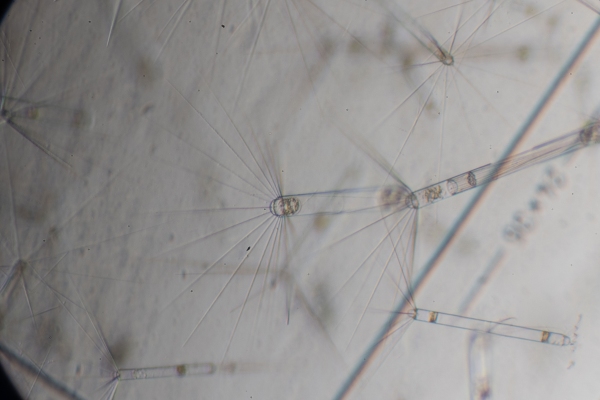One day we’ll be stationed next to the Antarctic coast, with the ripe smell of a penguin colony nearby, and the next we’ll be steaming through large swells on route to pick up oceanographic moorings.
Sitting in the library of the R.V. Tangaroa, I’m contemplating the (almost) three weeks spent at sea. From the nauseating swell of the ferocious fifties to the mornings when I’ve woken to beautiful vistas of Antarctic mountains.
So, what am I actually doing in Antarctica? I’m investigating phytoplankton. Also onboard, Dr Karl Safi and PhD student Antonia Cristi are doing the microscope work.
Phytoplankton are microscopic organisms that live in virtually all the sunlit ocean. They are responsible for half of the oxygen on the planet, just as much as all the land-based plants. Likelihood is, some of the oxygen you’re breathing right now has been produced by phytoplankton!
They’re also responsible for some of the seafood on your plate. The wider marine ecosystem is reliant upon organic material produced by phytoplankton. Carbon produced by phytoplankton rises up the food chain, to larger plankton, fish (which we eat), seabirds and even whales.
The Antarctic region of the Southern Ocean provides a unique setting for phytoplankton. When light penetrates the water column in the spring and summer, phytoplankton start growing at incredible rates. The nutrient rich water of the Southern Ocean starts a phytoplankton bloom.
The Ross Sea displays the largest seasonal trend in phytoplankton growth, this makes it one of the earth’s largest carbon sinks. When phytoplankton drift down to the ocean floor, the carbon they’ve taken up gets stored for millennia. This process removes carbon dioxide from the atmosphere, and stabilises our planet’s climate. As our climate shifts, we hope to understand how warming will affect photosynthesis from phytoplankton that surround Antarctica.


